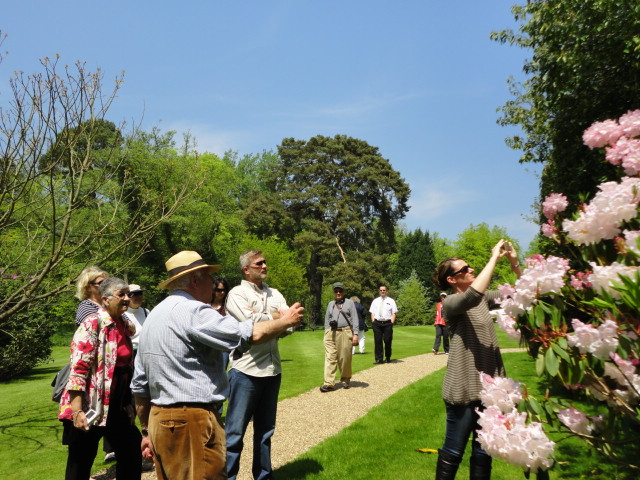Blenheim Palace
Blenheim Palace is the home of the Dukes of Marlborough and was the birthplace of Sir Winston Churchill.
In the 12th century the park was the site of Henry II’s Rosamond’s Bower. Her well still exists. The English baroque Blenheim Palace was built as a gift from Queen Anne and a grateful nation for John Churchill, 1st Duke of Marlborough, in recognition of his great victory over the French at the Battle of Blenheim in 1704. The gardens were first laid out by Henry Wise in the early 18th century. Sir John Vanburgh, who designed the immense palace, also had a hand in them. In the 1760s the park was landscaped by ‘Capability’ Brown. Between 1910 and 1930 new parterres by the palace were laid out by the French designer Achille Duchêne.
Today the gardens are still renowned for their beauty and range from the formal Water Terraces, Italian Garden and Rose Garden to the natural charm of the Arboretum and Cascade. Blenheim Lake, created by ‘Capability’ Brown and spanned by Vanburgh’s Grand Bridge is the focal point of over 2,000 acres of landscaped parkland. The Pleasure Garden Complex includes the Herb and Lavender Garden and the Butterfly House. Within the 14 foot high walls of the old kitchen garden built in 1705, is the Marlborough Maze, the world’s largest symbolic hedge maze. There, still hangs a bell that used to summon a regiment of gardeners to their duties.
The visitor who enters Blenheim Palace through Hawksmoor’s Triumphal Arch into Blenheim Park sees one of the greatest contrived landscapes in Britain. The architect Vanbrugh employed Bridgeman and Henry Wise, Queen Anne’s master gardener and the last of British formalists, to contrast a bastion-walled ‘military’ garden and kitchen gardens. Wise also planted immense elm avenues and linked Vanburgh’s bridge to the sides of the valley. However the garden was far from ready when the first Duke of Malborough moved into the palace in 1719.
Major alterations were made by the 4th, 5th and 9th dukes, one of the earliest of which was the grassing over of Wise’s formal gardens by ‘Capability’ Brown after 1764. Brown also developed the two huge lakes. The gardens include formal areas restored by Achille Duchêne in the 1920s from those grassed by Brown in the North Forecourt. He made formal gardens on the east and west, the latter two water terraces in the Versailles style. To the east of the elaborate Italian garden is a sunken garden of patterned box and golden yew, intersperced with various seasonal plantings. To the west from the terraces are the rose garden and arboretum (1984). From the vast south lawn one passes through a magnificent grove of cedars and on towards Wise’s walled garden, past shrubberies of laurel and an Exedra of box and yew, in the words of the Oxford Companion “… the whole exemplifying the Victorian pleasure grounds”.

 Passionate about beautiful gardens? Experience the finest gardens on one of our small and friendly group tours.
Passionate about beautiful gardens? Experience the finest gardens on one of our small and friendly group tours.
 Ready to book?
Ready to book? 
